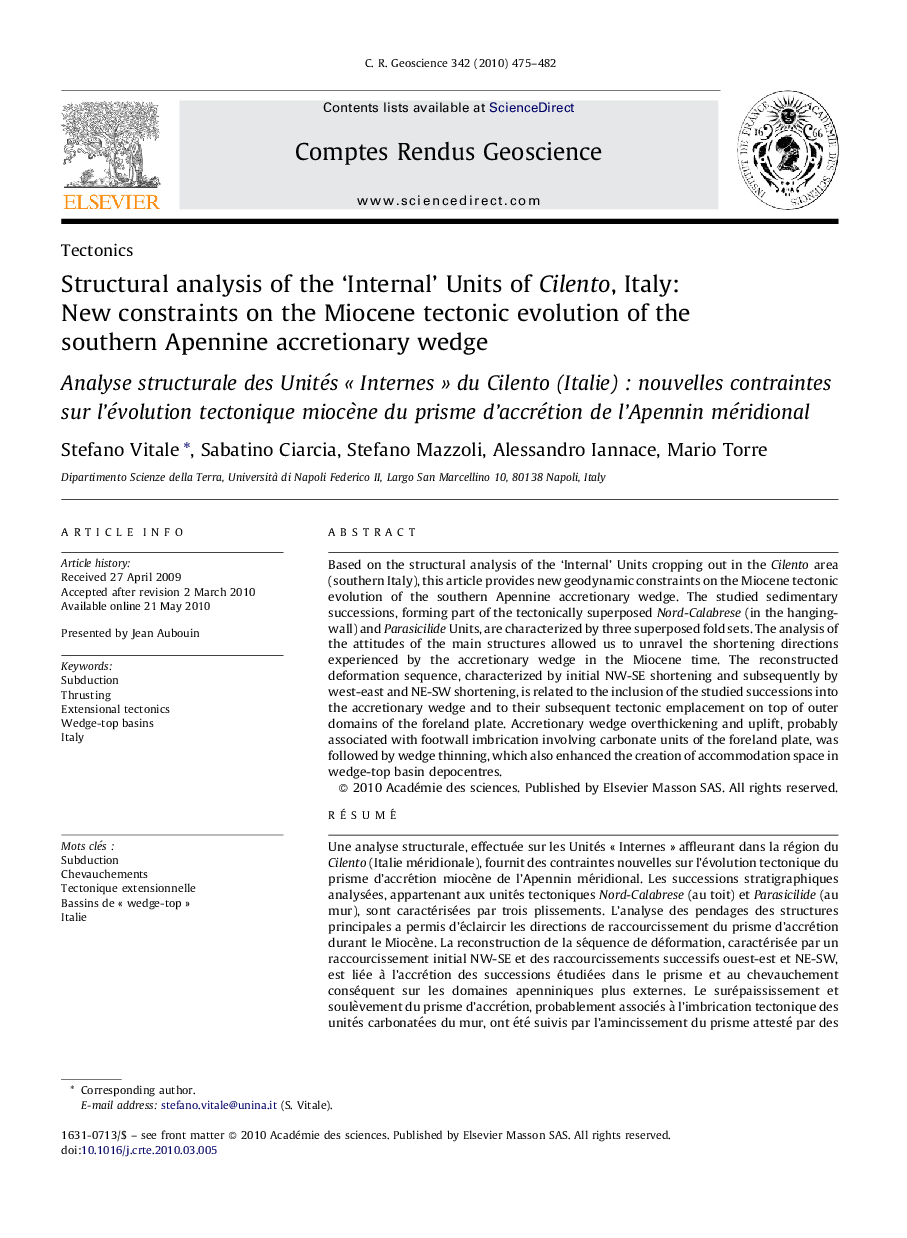| کد مقاله | کد نشریه | سال انتشار | مقاله انگلیسی | نسخه تمام متن |
|---|---|---|---|---|
| 4462418 | 1313497 | 2010 | 8 صفحه PDF | دانلود رایگان |

Based on the structural analysis of the ‘Internal’ Units cropping out in the Cilento area (southern Italy), this article provides new geodynamic constraints on the Miocene tectonic evolution of the southern Apennine accretionary wedge. The studied sedimentary successions, forming part of the tectonically superposed Nord-Calabrese (in the hanging-wall) and Parasicilide Units, are characterized by three superposed fold sets. The analysis of the attitudes of the main structures allowed us to unravel the shortening directions experienced by the accretionary wedge in the Miocene time. The reconstructed deformation sequence, characterized by initial NW-SE shortening and subsequently by west-east and NE-SW shortening, is related to the inclusion of the studied successions into the accretionary wedge and to their subsequent tectonic emplacement on top of outer domains of the foreland plate. Accretionary wedge overthickening and uplift, probably associated with footwall imbrication involving carbonate units of the foreland plate, was followed by wedge thinning, which also enhanced the creation of accommodation space in wedge-top basin depocentres.
RésuméUne analyse structurale, effectuée sur les Unités « Internes » affleurant dans la région du Cilento (Italie méridionale), fournit des contraintes nouvelles sur l’évolution tectonique du prisme d’accrétion miocène de l’Apennin méridional. Les successions stratigraphiques analysées, appartenant aux unités tectoniques Nord-Calabrese (au toit) et Parasicilide (au mur), sont caractérisées par trois plissements. L’analyse des pendages des structures principales a permis d’éclaircir les directions de raccourcissement du prisme d’accrétion durant le Miocène. La reconstruction de la séquence de déformation, caractérisée par un raccourcissement initial NW-SE et des raccourcissements successifs ouest-est et NE-SW, est liée à l’accrétion des successions étudiées dans le prisme et au chevauchement conséquent sur les domaines apenniniques plus externes. Le surépaississement et soulèvement du prisme d’accrétion, probablement associés à l’imbrication tectonique des unités carbonatées du mur, ont été suivis par l’amincissement du prisme attesté par des failles normales qui recoupent les structures plicatives, et par la formation de bassins de « wedge-top ».
Journal: Comptes Rendus Geoscience - Volume 342, Issue 6, June 2010, Pages 475–482